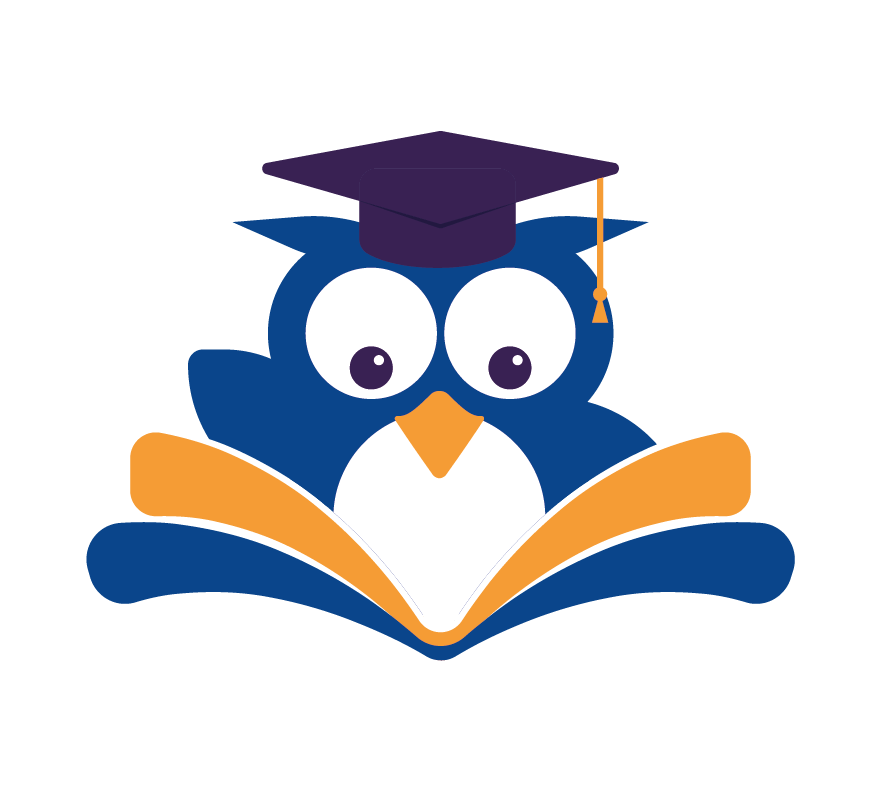Are you among the many adults who haven’t picked up a book in a long time? It’s time to change that! With the right strategies and motivation, anyone can become a better reader. In this ultimate guide, we’ll explore the secrets to reading like a pro and provide you with expert advice on transforming your study habits.
We’ll cover various aspects of reading, from creating the optimal reading environment to mastering reading comprehension. By the end of this guide, you’ll be equipped with the skills and knowledge to become a reading champion. Our goal is to make reading an enjoyable and effective experience.
Key Takeaways
- Discover the secrets to reading like a pro
- Learn how to create an optimal reading environment
- Master reading comprehension techniques
- Transform your study habits for good
- Become a reading champion with our expert advice
Why Becoming a Better Reader Matters
Getting better at reading can change your life. It’s not just about reading more. It’s about reading well. By improving your reading skills, you can stand out at work, do well in school, and think better.
The Benefits of Advanced Reading Skills
Advanced reading skills bring many benefits. One big plus is better thinking. Studies show that reading often makes your memory, focus, and critical thinking sharper.
Cognitive Advantages of Regular Reading
Regular reading boosts your brain in several ways:
- It helps you remember things better
- It makes you better at staying focused
- It sharpens your critical thinking by breaking down complex texts
Reading’s Impact on Vocabulary and Communication
Reading also helps a lot with words and talking. By reading different texts, you can:
- Learn new words and talk more clearly
- Share your thoughts and ideas better
- Understand complex language and its context
How Reading Proficiency Impacts Academic and Professional Success
Being good at reading is key for school and work. It lets you quickly get and understand information. This makes you better at your job or studies.
Reading as a Competitive Advantage in the Workplace
In work, reading well puts you ahead. It helps you keep up with trends, understand complex papers, and make smart choices.
The Connection Between Reading and Critical Thinking
Reading and thinking critically go hand in hand. By reading different texts, you can get better at analyzing, judging, and making solid conclusions.
Assessing Your Current Reading Level
Knowing your current reading level is the first step to becoming a better reader. To read like a pro, you must know your strengths and weaknesses. This means checking your reading speed, how well you understand what you read, and how much you remember.
Simple Tests to Evaluate Your Reading Speed
To find out your reading speed, try simple tests like timed reading and online tools.
Timed Reading Exercises
Choose a text and set a timer for a few minutes. Read as you normally would. Then, count how many words you’ve read and figure out your words per minute (WPM). This will show you your reading speed baseline.
Online Assessment Tools
Online tools can also help you check your reading speed and how well you understand what you read. These tools give detailed reports and tips to get better.
Understanding Your Comprehension Strengths and Weaknesses
Comprehension is as key as reading speed. To improve reading ability, you must grasp what you’re reading.
Retention Evaluation Methods
Test your memory by summarizing the main points or answering questions after reading. This shows where you need to get better.
Identifying Your Reading Bottlenecks
Think about your reading habits to find what slows you down, like subvocalization or going back to read again. Knowing these habits lets you work on strategies to beat them.
By checking your reading level and knowing your comprehension strengths and weaknesses, you can find effective reading strategies for you.
The Fundamentals of Effective Reading
To read like a pro, start by making your reading space great. This means creating a place where you can focus without distractions.
Creating the Optimal Reading Environment
A good reading environment can really help you understand what you’re reading. Here are some important things to think about:
Lighting and Ergonomic Considerations
Make sure your reading area is bright and comfortable. Good lighting helps your eyes, and an ergonomic setup keeps you comfortable while you read.
Managing Background Noise
Background noise can pull you away from your book. Try using noise-cancelling headphones or soft calming music to help you focus.
Proper Posture and Eye Movement Techniques
Good posture and eye care are key to better reading. They help you avoid eye strain when you read a lot.
Reducing Eye Strain During Extended Reading
Remember the 20-20-20 rule. Every 20 minutes, look away from your book and focus on something 20 feet away for 20 seconds.
Minimizing Distractions for Maximum Focus
To stay on track, you need to avoid distractions. Here are some tips:
- Turn off notifications on your devices
- Use website blockers to limit access to distracting websites
- Create a quiet, dedicated reading space
Digital Distraction Management Strategies
Use digital distraction management strategies like turning off notifications. Also, find apps that help you stay focused.
How to Read Like a Champ: Core Techniques
To read like a pro, you need to learn a few key techniques. These will help you stay focused and remember what you read. Reading well isn’t just about reading a lot. It’s about using the right strategies to understand better.
Preview-Read-Review Method
The Preview-Read-Review method is a great way to deal with tough texts. It’s a three-step process that makes sure you’re actively reading.
The 5-Minute Pre-Reading Scan
Before you start reading, spend five minutes scanning the text. Look at headings, subheadings, and any bold or highlighted text. This helps you get a sense of what’s coming.
Effective Post-Reading Review Practices
After you finish reading, take a few minutes to review what you’ve read. Sum up the main points in your own words. Think about what you’ve learned.
Strategic Highlighting and Annotation
Highlighting and annotating can make reading better. By actively engaging with the text, you’re more likely to remember important points.
Color-Coding Systems for Different Information Types
Using a color-coding system can help you keep track of different types of information. For example, use yellow for key terms, green for evidence, and pink for things you need to review again.
| Color | Information Type | Example |
|---|---|---|
| Yellow | Key Terms | Important vocabulary |
| Green | Supporting Evidence | Statistics or research findings |
| Pink | Areas for Further Review | Complex concepts or areas of confusion |
Active Reading Engagement Strategies
Active reading is more than just understanding the text. It’s about engaging with it critically.
The Question-in-Mind Approach
As you read, keep a question in mind related to the topic. This keeps you engaged and focused.
Dialogue with the Text Technique
Have a mental conversation with the text by asking questions and making connections. Challenge the author’s arguments too.

By using these techniques, you’ll improve your reading skills. The key is to stay engaged, be strategic, and practice often.
Speed Reading: Accelerating Your Reading Pace
Speed reading can open up a world of knowledge for you. It’s a skill that makes reading faster and more efficient. With a few techniques, you can read quicker without losing understanding.
Chunking Text for Faster Processing
Chunking is a method where you group words together. This makes reading faster by reducing eye movements. Try reading in groups of three to five words at a time.
Peripheral Vision Expansion Exercises
Expanding your peripheral vision can also speed up reading. Focus on a point straight ahead and take in words on either side without moving your eyes. Use a flashcard or reading guide for focus.
Reducing Subvocalization
Subvocalization, or reading in your head, can slow you down. To overcome this, practice reading in groups. Focus on the text’s meaning, not individual words.
Techniques to Overcome the Inner Voice
Use a pacer, like a finger or pointer, to guide your eyes. This keeps you focused and avoids subvocalization.
Progressive Practice Methods for Increasing Speed
Practice regularly to increase your speed. Start with a timer for a minute and read as much as you can. Then, try to read more in the same time over the next few days.
The 10% Weekly Improvement Plan
Aim to boost your speed by 10% each week. This gradual increase builds a lasting reading habit.
Using a Pacer to Guide Eye Movement
A pacer helps maintain a steady reading speed. Try a digital pacer or reading app to guide your eyes.
| Technique | Description | Benefit |
|---|---|---|
| Chunking | Grouping words together | Faster reading |
| Reducing Subvocalization | Avoiding inner voice | Improved comprehension |
| Progressive Practice | Regular practice | Increased speed |
Mastering Reading Comprehension
Improving your reading skills is a big step. It’s not just about reading words; it’s about understanding their meaning. To do this, we need to find ways to connect deeply with what we read.
Critical Analysis While Reading
Critical analysis is key to better reading. It means we actively think about what we read, not just passively. We need to spot important points, evidence, and the author’s viewpoint.
Identifying Key Arguments and Evidence
While reading, focus on the main points and evidence. Ask yourself, “What is the author saying?” and “What evidence do they use?” This helps you grasp the text better and think critically about it.
Recognizing Author Bias and Perspective
Authors always have their own views. Knowing this helps us read more critically. Think, “What is the author’s viewpoint?” and “How might their bias affect the information?”
Connecting New Information to Existing Knowledge
Linking new info to what you already know is crucial. It helps you build a mental map of understanding. This makes it easier to remember and use what you’ve read.
The Mental Web-Building Technique
The mental web technique is about making a mental map of what you read. As you read, think about how new info connects to what you already know. This strengthens your understanding by linking different pieces of information.
| Technique | Description | Benefits |
|---|---|---|
| Critical Analysis | Actively evaluating information presented in the text | Improves understanding, critical thinking, and evaluation skills |
| Mental Web-Building | Creating a mental map of new information and connecting it to existing knowledge | Enhances retention, recall, and application of new information |
| Visualization Techniques | Creating mental images of complex concepts | Improves retention and understanding of complex information |
Visualization Techniques for Better Retention
Visualization is a great way to improve reading skills. It helps you remember and recall complex ideas by creating mental images.
Creating Mental Images of Complex Concepts
As you read, try to picture the ideas in your mind. This makes the information stick better and is easier to remember.
Memory Palace Method for Information Storage
The memory palace method uses mental locations to store new info. It’s a good way to remember complex or detailed material.
By using these strategies, you can greatly improve your reading skills. You’ll become a more effective reader.
Effective Note-Taking Systems for Readers
Effective note-taking can really change the game for readers. It helps improve how well you understand and remember what you read. We’ll look at different note-taking systems to help you become a better reader.
Cornell Method for Academic Reading
The Cornell Method is perfect for schoolwork. It divides your paper into two parts. One column is for keywords and questions, and the other is for your notes.
Mind Mapping for Creative Texts
Mind mapping is great for creative texts. It lets you visually organize your thoughts and connections.
Digital vs. Handwritten Notes: Pros and Cons
Both digital and handwritten notes have their benefits. Handwritten notes help you remember better. Digital notes are easier to organize.
When to Choose Each Method
| Method | Pros | Cons |
|---|---|---|
| Handwritten | Better retention, tactile experience | Space limitations, harder to share |
| Digital | Ease of organization, accessible anywhere | Distractions, dependency on technology |
Reading Strategies for Different Types of Content
Whether you’re reading a dense textbook or scrolling through social media, the right strategy matters. Each type of content needs a special approach to understand and enjoy it better.
Academic and Technical Material
For academic and technical texts, being systematic is key. Use the Preview-Read-Review method for textbooks and research papers. First, look at chapter headings and summaries. Then, read while taking notes. Finally, review the main points.
Tackling Textbooks and Research Papers
When dealing with complex texts, break them into smaller parts. It’s okay to look up terms or concepts you don’t know. Active engagement through summarizing and self-quizzing can really help you understand.
Fiction and Narrative Texts
Fiction and narrative texts offer a unique reading experience. It’s both fun and analytical. To enjoy these texts fully, practice immersive reading. Let yourself get lost in the story while noticing the author’s techniques and themes.
Immersive Reading for Enjoyment and Analysis
As you read, think about the plot, characters, and the author’s goals. This way, you’ll get more out of your reading. It makes the experience both fun and thought-provoking.
Online Content and Digital Reading
Online content needs its own set of strategies, especially with hypertext and multimedia content. Be careful not to get distracted or overwhelmed by too much information.
Navigating Hypertext and Multimedia Content
Use tools and browser extensions to manage online information. To avoid information overload, focus on the most important sources. Use skimming and scanning to find what’s most relevant quickly.

Overcoming Common Reading Challenges
Every reader faces challenges, but we can grow from them. Reading can be tough, but we have ways to beat these hurdles.
Dealing with Reading Fatigue
Reading fatigue is common, especially during long study times or when reading complex texts. We must manage our energy well.
Energy Management Techniques for Long Reading Sessions
Here are tips to keep your energy up:
- Take regular breaks to stretch and refresh your mind.
- Adjust the lighting and temperature to create a comfortable reading environment.
- Stay hydrated and have healthy snacks nearby.
Strategies for Difficult or Dense Material
Dense or complex texts can seem daunting. But breaking them down into smaller parts makes them easier to handle.
Breaking Down Complex Texts into Manageable Chunks
Try this method:
- Preview the text to understand its structure and main ideas.
- Divide the text into smaller sections and focus on one section at a time.
- Summarize each section in your own words to reinforce understanding.
Solutions for Reading with ADHD or Concentration Issues
For readers with ADHD or concentration problems, special strategies can help a lot.
Specialized Approaches for Different Learning Styles
Consider these strategies:
| Learning Style | Recommended Approach |
|---|---|
| Visual | Use diagrams, charts, and mind maps to visualize information. |
| Auditory | Listen to audiobooks or use text-to-speech software. |
| Kinesthetic | Take notes by hand or use a digital tool that mimics handwriting. |
Building a Sustainable Reading Habit
Creating a lasting reading habit takes commitment and patience. You need a consistent reading plan that matches your life. This helps you become a better reader.
Creating a Realistic Reading Schedule
First, make a reading schedule that you can keep. Find the best times to read and set aside specific times for it.
Integrating Reading into Your Daily Routine
Make reading a part of your daily life. Read during your commute, before bed, or at lunch. Being consistent is key.
Setting Achievable Reading Goals
Setting goals is important to keep you motivated. Choose a goal that’s realistic, like pages or books per month.
From Pages Per Day to Books Per Month
For example, aim to read 20 pages a day or one book a month. Clear goals help you stay on track.
Tracking Progress and Celebrating Milestones
Keeping track of your reading is vital. Use digital or physical trackers to log your progress.
Digital and Physical Reading Trackers
Digital trackers are easy and automatic, while physical ones offer a hands-on feel. Pick what suits you best.
Building a Reading Community for Accountability
Being part of a reading group adds accountability and fun. Look for online forums, local clubs, or social media groups for readers.
| Tracker Type | Features | Benefits |
|---|---|---|
| Digital | Automated calculations, reminders | Convenience, accuracy |
| Physical | Tactile experience, customizable | Personalization, satisfaction |
Conclusion: Your Journey to Reading Mastery
Becoming a good reader is a journey that needs dedication and the right strategies. By using the techniques from this guide, you’re on your way to reading like a pro and mastering reading.
To master reading skills, practice often and be patient with your progress. Stay committed to your goals. Whether you’re a student or a lifelong learner, these skills will help you.
Keep practicing and be open to changing your approach as needed. This will not only improve your reading but also make learning more enjoyable.
So, start today and enjoy the benefits of being a skilled reader. Happy reading!

